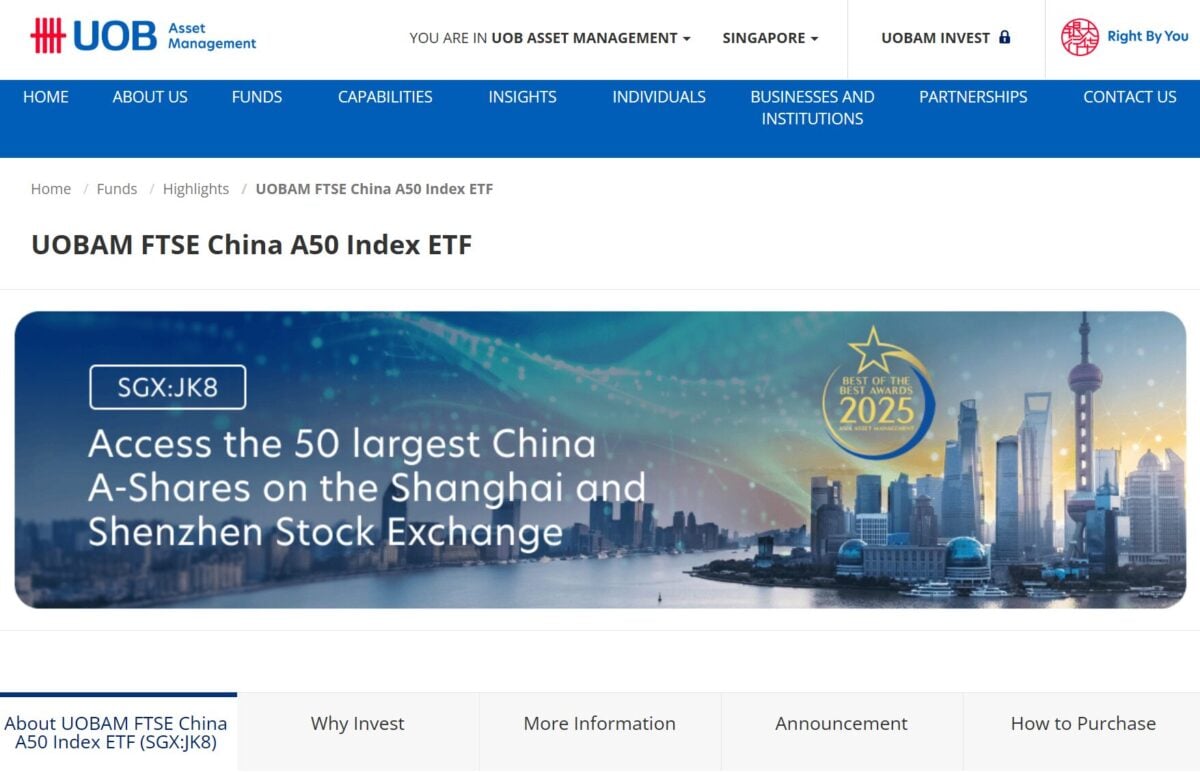
For investors in Singapore, one of the simplest and most effective ways to gain investment exposure is through exchange-traded funds (ETFs).
ETFs allow investors to target specific asset classes or geographies, making them a popular choice for building diversified portfolios. In recent years, the number of ETFs listed on the Singapore Exchange (SGX) has grown, reflecting Singapore’s role as a key financial hub in Southeast Asia.
When it comes to capturing Asia’s long-term growth potential, some investors may prefer a more focused strategy—investing in selected Asian markets rather than the entire region. That’s exactly the approach taken by Nikko AM with the launch of the Amova MSCI AC Asia Ex Japan Ex China Index ETF (SGX: A93/A94), which began trading on the SGX on Wednesday, 2 April.
In this week’s edition of 4 Stocks This Week, we look at four things investors need to know before they invest in the newest ETF listed on the SGX.
#1 Targeted Exposure To Asia’s Growth Markets (Without Japan & China)
As its name suggests, the Amova MSCI AC Asia Ex Japan Ex China Index ETF excludes the two largest Asian economies—Japan and China—from its holdings. There are good reasons for that. Due to their sheer size, both China (the second largest economy in the world) and Japan (the fourth largest economy in the world) will likely take an outsized position in any Asian ETFs.
While “Asia ex Japan” equity funds have long been common as the Japanese economy has been massive for decades, China’s growing influence on the region’s markets in recent years has led many investors to prefer a dedicated China allocation. A broad-based Asia fund may no longer provide the right level of exposure for those looking to manage their China investments separately.
Thus, the Amova MSCI AC Asia Ex Japan Ex China Index ETF offers a more targeted approach, focusing on the rest of Asia’s growth story. Its top five country allocations are
- Taiwan (32.4%)
- India (31.9%)
- South Korea (14.8%)
- Hong Kong (6.9%)
- Singapore (5.8%)
Together, these five markets make up over 90% of the ETF’s geographical exposure.

Source: Product Brochure, As of 31 December 2024
The remaining countries include Malaysia, Indonesia, Thailand, and the Philippines, providing some diversification into the ASEAN region. That said, the ETF’s core focus is clearly on North Asia and India.
By tracking the MSCI AC Asia ex Japan ex-China Index, the Amova ETF gives investors access to large and mid-cap companies in both developed and emerging Asian markets, minus China and Japan.
#2 Top Holdings & Sectors
Given the dominance of China and Japan in Asia’s equity landscape, there are relatively few mega-cap companies from the rest of the region.
The top five holdings are:
- TSMC (Taiwan Semiconductor Manufacturing Company) – 15.1%
- Samsung Electronics – 4.3%
- HDFC Bank – 2.5%
- AIA Group – 2.0%
- Reliance Industries – 1.9%

Source: Product Brochure, As of 31 December 2024
In terms of sector exposure, it’s not surprising that Information Technology (36.2%) tops the list, followed by Financials (23.5%) and Industrials (8.6%). In addition to heavyweight TSMC, the ETF includes many Taiwanese and Korean semiconductor firms and Southeast Asian e-commerce giant Sea Ltd.
As a result, this ETF gives investors more targeted exposure to Asia’s role in the Artificial Intelligence (AI) boom through the dominant chip sector and provides structural growth opportunities in the fast-growing India market.
#3 Hypothetical Returns Over Past 10 Years
For investors considering this ETF, looking at how some of its largest holdings have performed over the long term is useful. A ten-year horizon is often a good gauge of a company’s ability to deliver consistent growth, especially through different market cycles.
Take TSMC, the ETF’s top holding by a wide margin. Over the past decade, its share price has climbed an impressive 540%. The Taiwanese chipmaker has become a cornerstone of the global tech supply chain, thanks to its dominance in advanced semiconductor manufacturing and its relentless focus on technological innovation.
Samsung Electronics, another heavyweight in the ETF, has seen its share price rise by 105% over the same period. Known for its smartphones, consumer electronics, and memory chips, the South Korean giant has maintained a strong global presence despite increasing competition.
In India, HDFC Bank has emerged as one of the country’s most successful financial institutions. Over the past ten years, its share price has gained 255%, driven by India’s expanding middle class and the steady rise in demand for banking and financial services.
Hong Kong-based insurer AIA Group has also established a strong presence across Asia. While its share price growth has been more modest, rising 23% over the past decade, it remains a well-managed company with a solid business footprint throughout the region.
Rounding out the top five holdings, Reliance Industries in India has been a standout performer. The company’s transformation from a traditional energy business into a tech-enabled conglomerate has captured investor interest, with its share price jumping 505% over the last ten years.
#4 ETF Particulars
Of course, before investing, it’s important to understand the key features of the Amova ETF.
Like many ETFs listed on the Singapore Exchange today, it has a dual-currency share class. This allows investors to trade the ETF in either Singapore Dollars (SGD) or US Dollars (USD), depending on their preference.
The primary share class, denominated in SGD, trades under the ticker SGX: A93, while the secondary USD share class trades as SGX: A94. Regardless of your chosen currency, both share classes track the same underlying index.
The ETF’s expense ratio is 0.60% per annum, reflecting the annual cost of managing the fund. As with other ETFs on the SGX, investors can purchase the Amova ETF in single-share units, making it accessible even for those starting with a smaller investment amount.
Another key point to note: the ETF is accumulating in nature, meaning it does not distribute dividends. Instead, any dividends received from the underlying companies are automatically reinvested back into the fund, helping to grow the investment over time through compounding.
As of 1 April 2025—just before its official listing date—the ETF had assets under management (AUM) of S$7.1 million, giving it a reasonable starting base as it enters the market.
The post 4 Things To Know About The Newly-Launched Amova MSCI AC Asia Ex Japan Ex China Index ETF Before Investing appeared first on DollarsAndSense.sg.











